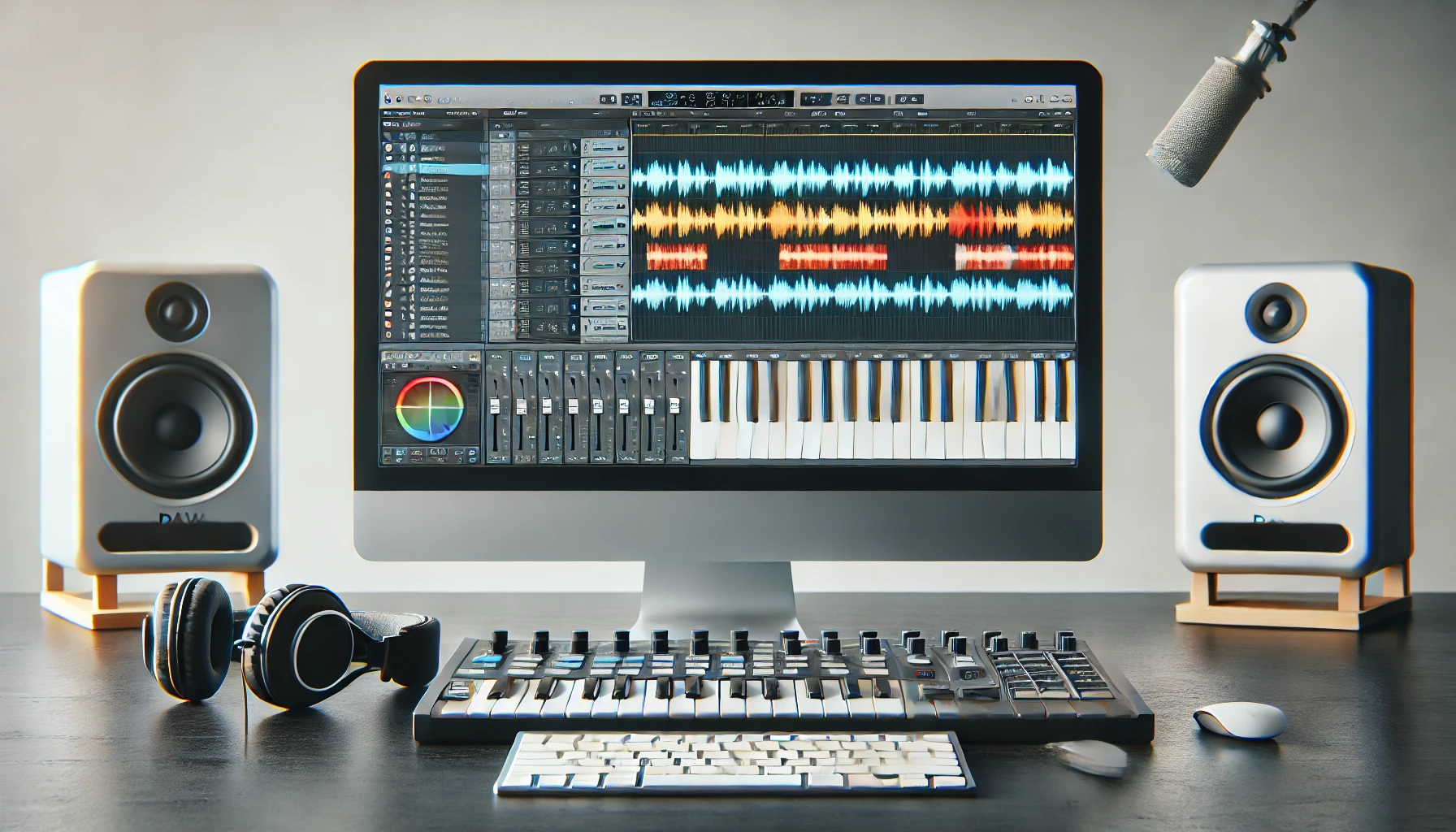Effective Music Branding Strategies: How to Build a Memorable Music Identity
In today’s competitive music industry, having strong branding is just as important as the music itself. Effective branding helps create a lasting impression, builds emotional connections with your audience, and makes your music stand out in a crowded marketplace. Whether you’re an independent artist or part of a band, developing a memorable brand identity can help you establish a long-term career and grow your audience.
This blog will explore some effective music branding strategies that can help you define your identity, connect with fans, and stand out in the music industry.
- Understand Your Unique Identity
At the core of any successful brand is a clear and authentic identity. Before you begin marketing your music, it’s crucial to define who you are as an artist and what you stand for. Your identity is shaped by a combination of your sound, personality, values, and visual style.
Key Questions to Define Your Identity:
- What is your musical genre?: Are you a soulful R&B artist, a genre-blending electronic producer, or a rebellious punk rock band?
- What makes your music unique?: Consider your sound, lyrical themes, and how you stand out from other artists in your genre.
- What is your story?: Fans connect with artists on a personal level. Share your background, struggles, inspirations, and the journey that brought you to where you are today.
Example: Artists like Billie Eilish have a clearly defined brand. Her dark, moody visual aesthetic, combined with introspective lyrics, sets her apart in the pop world.
Muibas Tip:
When collaborating with other musicians on Muibas, you can experiment with different styles and sounds, helping you refine and sharpen your musical identity. The collaborations you engage in can also become part of your brand narrative, showcasing your versatility and creative evolution.
- Create a Consistent Visual Identity
Your visual identity should be cohesive and reflect your musical style. This includes everything from your logo, album artwork, and social media graphics to your fashion style and live performance aesthetics. Consistency in your visual identity helps reinforce your brand across all platforms and materials.
Components of a Strong Visual Identity:
- Logo: A distinct and memorable logo helps with brand recognition. It can appear on merchandise, albums, and social media platforms.
- Color Scheme: Choose a consistent color palette that reflects the mood of your music. For instance, bright, energetic colors may fit a pop artist, while darker tones suit metal or alternative genres.
- Album Artwork: Your album covers should align with your overall brand and communicate the essence of your music visually.
- Photography: High-quality, professional photos are crucial. They should capture your personality, align with your brand’s tone, and be used consistently across press kits, social media, and your website.
Muibas Tip:
When collaborating with other musicians on Muibas, share visual content alongside the music creation process. You can create cohesive branding by working with visual artists who complement your music’s aesthetics. Showcase these collaborations to build a distinct visual presence that matches your musical identity.
- Tell Your Story Authentically
Your brand story is what connects you to your audience. Storytelling gives fans a way to relate to your journey and feel emotionally invested in your music. Be authentic in your storytelling—fans are more likely to connect with artists who are real, transparent, and genuine.
Ways to Tell Your Story:
- Through Your Music: Your lyrics can be a powerful storytelling tool. Share personal experiences, emotions, and messages that reflect who you are as an artist.
- Through Social Media: Share behind-the-scenes content, your creative process, and personal anecdotes on platforms like Instagram, TikTok, and YouTube.
- In Interviews: Use media opportunities to talk about your journey, challenges, and what inspires you to make music.
Example: Taylor Swift is known for her storytelling ability, both in her music and her public persona. She creates narratives around her albums (e.g., the „folklore“ and „evermore“ era) that invite fans into her world.
- Engage with Your Audience
Branding is not just about presenting your identity—it’s also about interacting with your audience and building a loyal fanbase. Engaging with your audience makes them feel part of your journey, which helps turn listeners into dedicated fans.
Tips for Audience Engagement:
- Use Social Media: Respond to comments, answer fan questions, and engage in conversations with your followers. Instagram Stories, TikTok, and Twitter (X) are great for real-time interactions.
- Host Q&A Sessions: Use Instagram Live, Facebook Live, or Twitch to host Q&A sessions where fans can ask you questions directly. This builds a deeper connection between you and your audience.
- Fan-Generated Content: Encourage your fans to create content related to your music—whether that’s cover songs, fan art, or TikTok videos using your tracks. Sharing fan-generated content helps build a community around your music.
Muibas Tip:
By collaborating with other musicians on Muibas, you can create unique, collaborative content that showcases your creativity and dedication to music. Share updates from your collaborative projects with your fans, allowing them to witness your creative process and even offer feedback.
- Collaborate with Like-Minded Artists
Collaborations are a powerful way to grow your brand, reach new audiences, and add diversity to your music. Working with other artists—whether they are in the same genre or not—can introduce your music to new fanbases and create cross-promotion opportunities.
Types of Collaborations:
- Musical Collaborations: Work with producers, vocalists, or instrumentalists to co-create new music that reflects both of your styles.
- Live Performances: Team up with other musicians for joint live performances, either virtual or in-person, to introduce your music to their fans.
- Cross-Promotional Content: Collaborate on social media campaigns, podcasts, or music videos to promote each other’s music and share audiences.
Example: Artists like Calvin Harris frequently collaborate with other artists from different genres, expanding their reach and introducing their music to new audiences.
Muibas Tip:
Muibas is an excellent platform for connecting with like-minded musicians. Collaborate on new tracks or remix projects and build a brand that reflects your collaborative spirit. Showcasing these partnerships can strengthen your brand and help you grow your audience faster.
- Leverage Social Media to Build Your Brand
Social media platforms are powerful tools for building your brand as a musician. By curating your content, engaging with your audience, and sharing behind-the-scenes updates, you can create a dynamic and interactive presence that helps grow your fanbase.
Social Media Branding Strategies:
- Instagram: Focus on visually appealing content that aligns with your music brand. Use Stories and Reels to give fans a glimpse of your daily life and the creative process.
- TikTok: Share short, engaging content that showcases your personality and music. TikTok challenges, live performances, and behind-the-scenes clips work well here.
- YouTube: Upload official music videos, lyric videos, and behind-the-scenes footage to build your presence on the platform.
- Twitter (X): Engage in real-time conversations with fans and other artists. Use Twitter to share quick updates, music releases, and thoughts on trends in the music industry.
Muibas Tip:
Collaborating on Muibas allows you to create fresh and unique content that you can share across your social media platforms. Sharing the journey of your music creation, revisions, and final projects with collaborators gives fans insight into your process, helping you build a stronger, more relatable brand.
- Utilize Branding in Your Merchandise
Merchandising is a great way to extend your brand beyond the music. Fans love to buy physical products that connect them with their favorite artists, and merchandise can become an additional revenue stream.
Merchandise Ideas:
- T-Shirts and Hoodies: Featuring your logo, album art, or lyrics.
- Vinyl and CDs: For fans who enjoy collecting physical music formats.
- Posters and Prints: Highlighting album artwork or photography.
- Limited Edition Items: Create exclusive merchandise around album releases or tours to generate excitement.
Example: Artists like Travis Scott and Billie Eilish have built powerful merchandise lines that are closely tied to their brand and aesthetics.
Conclusion: Build a Strong Brand with Muibas
Effective music branding strategies can help you grow your fanbase, create a memorable presence, and build a lasting career. By focusing on your unique identity, consistent visuals, engaging storytelling, and collaborations, you can create a brand that resonates with listeners and media professionals alike.
With Muibas, you can expand your brand through collaboration, share unique behind-the-scenes content, and release high-quality tracks faster. The platform allows you to work with other artists, enhance your creativity, and build a dynamic brand that showcases your versatility and passion for music.


